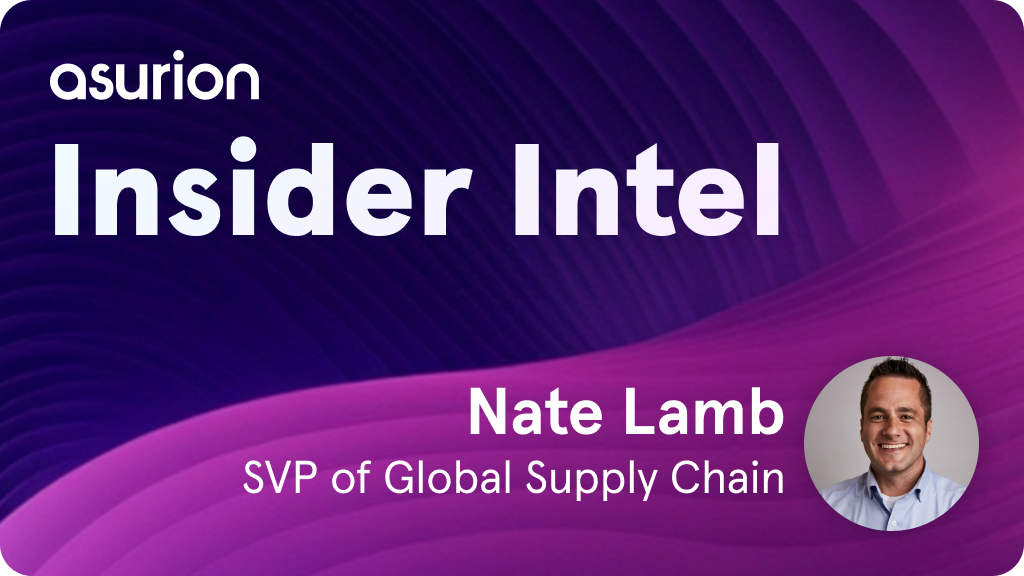The Moment Brands Lose Control. When OEMs sell through retailers or online platforms, they often lose control the moment the product is unboxed. Frustrating integration? The product gets returned. No post-purchase connection? The customer forgets who made it. These post-sale pain points don’t just dent satisfaction—they stall loyalty, kill momentum, and block expansion into the customer’s next device, room, or ecosystem. Yet most brands still overlook the hidden engine that could prevent all of it: the supply chain.
When people think of great customer experiences, they picture helpful service agents, an intuitive digital interface, or a memorable moment of surprise and delight. Rarely does supply chain come to mind.
But maybe it should.
Because in today’s world of “instant everything,” even the most inspiring brand can fall short if it fails to deliver what customers need, when they need it. A late delivery, a missed repair window, or an unresolved support issue isn’t just a glitch—it’s a broken promise.
For companies looking to grow and retain their customer base, the real battlefield isn’t just in advertising or UX—it’s in fulfillment. Supply chain is now the front line of brand trust. A differentiator. A loyalty engine.
At Asurion, we’ve spent 30 years building one of the most responsive, scalable, and customer-centric logistics infrastructures in tech. Our supply chain is designed not only to move fast—but to do so intelligently and reliably, meeting customers with convenience, personalization, and white-glove service when it matters most.
And here’s the unlock: it’s built to be shared. Our partners—retailers, carriers, and tech brands—can tap into this infrastructure to transform their own customer experiences without building it themselves.
Speed and Quality Should Be Table Stakes
Consumers no longer measure speed in days—they measure it in hours. That shift, pioneered by platforms like Amazon and Uber, has permanently changed expectations. Same-day and next-day service are no longer differentiators—they’re table stakes. A missed delivery or rescheduled appointment isn’t just frustrating; it undermines trust.
Leading organizations have responded by redesigning their supply chains around proximity and predictability. Distributed, quality-assured inventory. Extended cutoff times. Localized fulfillment. These aren’t just operational tactics—they’re strategies rooted in customer experience. At Asurion, that means operating a logistics network with more than 1,000 service points, including nearly 100 forward-stocking hubs, 700 local repair centers, and hundreds of mobile support units. The result:
- 3 million devices delivered same or next-day last year
- 3 million devices repaired in-market
This performance isn’t just a function of scale—it’s strategy. With the industry’s latest claim cutoff time (midnight CT), we’re ensuring that even late-night problems are addressed by morning.
Let Customers Choose Their Own Adventure
Personalization is a hallmark of great service—but real personalization lies in offering choice. Not every customer wants the same interaction, pace, or level of support. Forcing everyone through a fixed funnel introduces friction and drives dissatisfaction.
It’s complex to operationalize, but the payoff is clear: higher loyalty, reduced churn, and a service experience that feels as modern as the products being sold.
Imagine letting customers choose whether to visit a store, receive mobile support, or schedule expert setup at home. This isn’t theoretical—it’s happening now. It’s personalization at the infrastructure level.
Take tech setup, for example. Whether it’s a router, a smartphone, or a smart home hub, many consumers delay upgrades because they expect setup to be frustrating. And when it is, it often leads to returns or cancellations. That’s why we built expert delivery and setup into our process. An Asurion Expert can hand-deliver a device, transfer data, and walk the customer through new features.
Of the 1 million hand deliveries we made last year, 87% of customers opted for setup help from one of our highly trained experts. The result: a 4.9-star experience—and a moment of potential frustration turned into one of brand delight.
Sometimes, Personalization Is Worth More Than Efficiency
Offering customers flexible service options—especially when those options include sending experts into homes—introduces operational complexity. Unlike rideshare or food delivery, our field visits vary in duration and in what they require. Some appointments take minutes. Others, an hour or more. Not every expert is the right fit for every job.
For years, we tried modifying off-the-shelf routing platforms to solve this. But most systems were built for speed—not for trust, personalization, or successful first-time resolution. The result was inefficient dispatching, rescheduled appointments, and missed opportunities to make a great impression.
So we built our own.
Our custom routing engine prioritizes skills match over shortest drive time. We route based on who is best equipped to deliver a successful experience—not simply who’s nearby. Even though we’ve made a strategic trade-off by prioritizing customer outcomes over pure efficiency, we’ve seen our on-time performance improve, customer satisfaction increase, and employee morale rise. Experts now experience more consistent, logical routes with tasks aligned to their strengths.
It’s a clear example of logistics powering not just delivery—but experience.
From Logistics Function to Experience Platform
For many companies, supply chain remains a backend concern—something to be optimized for cost. But this view is increasingly misaligned with what customers actually care about.
Customers don’t separate “operations” from “experience.” They simply remember whether your brand showed up when it mattered.
This shift is particularly important for OEMs and tech providers that don’t have local infrastructure or in-market support staff. When products are sold online or through partners, customers are often left on their own after the unboxing. Even simple issues—like installation or data transfer—can lead to high return rates, poor reviews, or brand abandonment.
By tapping into a nationwide logistics and service network—with trained professionals already in the market—these brands can offer premium, human-powered support such as expert setup, mobile repair, or same-day replacement. No need to stand up physical locations or hire field staff.
It’s a way to deliver white-glove service, accelerate adoption, and reduce post-purchase friction—without the capital expense of building infrastructure from scratch.
